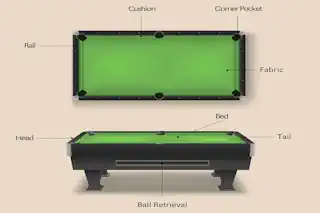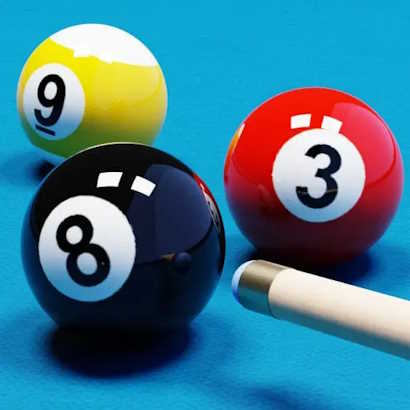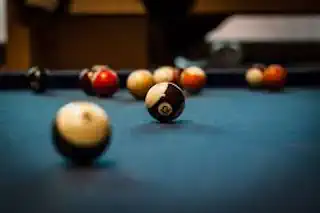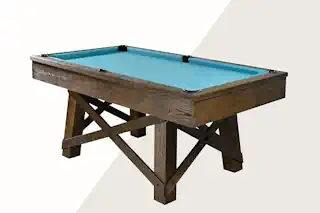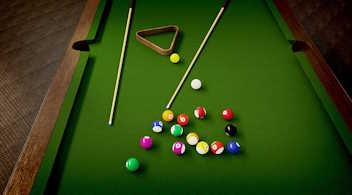Understanding Straight Pool: The Ultimate Beginner’s Guide
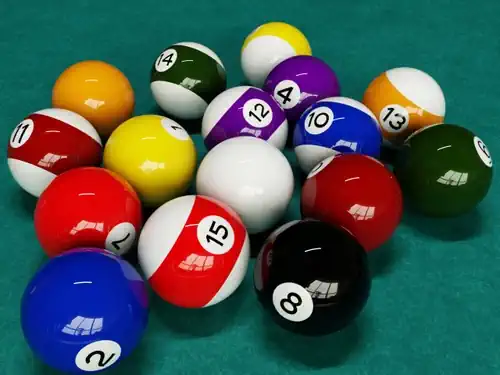
Straight pool, which is also known as 14.1 continuous or simply “straight,” is a traditional billiards game that requires precision, strategy, and patience. It is a popular choice among pool enthusiasts because of its thoughtful and slower-paced gameplay in comparison to games like 8-ball or 9-ball. If you’re new to the game, this guide will provide you with a customized roadmap to learn the basics, refine your technique, and comprehend the complexities of one of the most time-honored forms of pocket billiards.
Introduction to Straight Pool
Straight pool is one of the oldest of the billiards games, with a history that dates back to the early 1900s. The game is played with 15 object balls and a cue ball, with players required to pocket their designated group of balls and finally the 8 ball. Unlike games such as 8-ball or 9-ball, straight pool has no set number of shots, making it a comprehensive test of a player’s skill.
Basic Straight Pool Rules Overview
Breaking the Rack: The game begins with an opening break of the rack formed by the 15 object balls. To qualify as a legal break, at least two object balls must touch the rails or any ball must be pocketed. If the break fails to meet these conditions, it is considered a foul, and the opponent may choose to re-break.
Call Shot Mechanism: In straight pool, players must call their intended pocket for the object ball on every shot. However, unlike in some other variations of pool, the exact path or collisions with other balls do not need to be specified. If a player pockets the called ball in the nominated pocket, they continue their turn.
Continual Play: After successfully pocketing a ball, a player remains at the table for another shot. The process continues until the player fails to legally pocket a called ball, commits a foul, or wins the game by reaching the predetermined score.
Reracking: One of the unique aspects of straight pool is the need to rerack the object balls when only the cue ball and one object ball remain on the table. The fourteen balls are reracked without the apex ball, and play resumes with the player attempting to pocket the remaining ball on the table. This cycle can repeat several times in a game, emphasizing the game’s test of sustained skill and concentration.
Scoring: Each legally pocketed ball awards the player one point. The game continues until a predetermined score is reached, which is agreed upon before the game starts. Common final scores in amateur play range from 50 to 100, while professional matches may set the goal at 150 or even 200 points.
Fouls: Committing a foul in straight pool includes failing to hit any ball with the cue ball, pocketing the cue ball (scratch), or failing to hit the rails with any ball during a shot. Each foul results in a point penalty, typically subtracted from the fouling player’s score, and grants the incoming player ball-in-hand.
Setting Up the Game
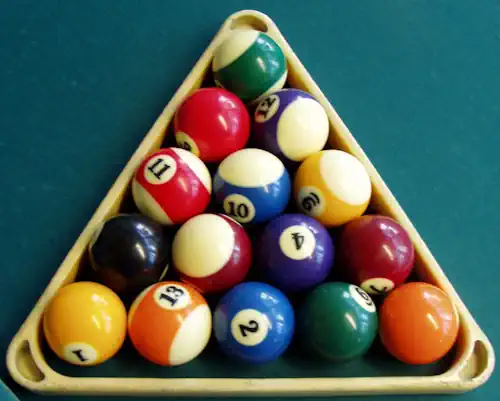
Racking the Object Balls
In this game of pool, the fifteen object balls are carefully arranged in a triangle formation on the table. The 1-ball is placed at the top of the triangle, serving as the starting point of the game. The 8-ball, which is placed at the center of the triangle rack, is a crucial piece in many pool games, as its position often determines the game’s outcome. The remaining balls are randomly scattered within the rack, ensuring that no two games start the same.
The base of the triangle is aligned parallel to the short end of the table, setting the stage for the break shot. This careful arrangement of balls is critical for the game’s initial dynamics and strategy, providing both a challenge and an opportunity for players right from the start.
The Break
The break shot is an essential aspect of straight pool, just like in other billiards games. It marks the beginning of a player’s strategy and sets the stage for the game to unfold. To execute a successful break shot, the player must hit the cue ball from a specific area known as the ‘kitchen,’ where it is placed at the start of each game. The objective is to hit the racked balls with enough force to spread them widely across the table.
For the break to be considered a legal shot, the player must ensure that the cue ball makes contact with the 1-ball first. This initial interaction between the cue ball and the racked balls can significantly influence the player’s ability to control the game and plan their next moves.
Scoring Mechanism
In the game of straight pool, each ball that is pocketed is worth one point. It doesn’t matter which ball is pocketed, as the point system applies to all. This ensures that success is based on skill rather than luck. During a player’s turn, they continue taking shots as long as they keep pocketing balls. The player’s turn ends when they fail to pocket a ball.
At this point, their opponent gains an advantage called “ball-in-hand” which allows them to place the cue ball anywhere on the table for their shot. This rule adds significant complexity to the game, as players must focus on both pocketing balls and positioning themselves to avoid giving their opponent an easy start after a miss.
Basic Playing Technique
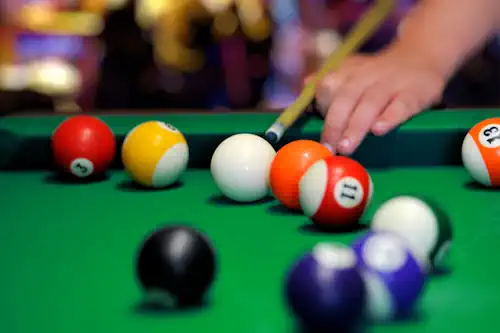
Aim and Shot Selection
Understanding the angle of incidence and the reflex angle of the pocket can help you choose your shots. Begin with simple shots to build confidence before progressing to more complicated setups. Always approach each shot with the intention of position play for the next ball.
Cue Ball Control
Control over the cue ball in straight pool is paramount. Practice hitting the cue ball at different heights to understand topspin, backspin, and sidespin. This control helps you set up for the next shot or to play safe if no clear shots are available.
Common Foul Rules
Definition of a Foul
In straight pool, a foul occurs if you pocket the cue ball, do not hit any object balls, or if object balls fail to hit a cushion or reach a rail after the cue ball contacts the last object ball.
Penalty for Fouls
When a foul is committed, the opponent receives a penalty depending on the rules agreed upon before the game; typically this will be the value of the ball next in sequence. The cue ball can also be placed behind the line or in the center of the table.
Winning the Game
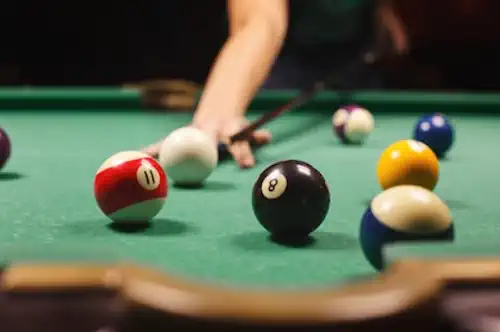
Strategies for Playing Straight Pool
Develop a strategy based on the layout of the table. Plan your sequence of shots to maximize your ability to score and minimize the risk of missing. Learn to play safe by positioning the cue ball in difficult spots for your opponent.
Achieving Victory
To win a game of straight pool, one must reach the agreed-upon score or be the last player standing after all balls are pocketed. Balance your aggression with caution, and always be ready to reassess your strategy based on your opponent and the table layout.
Conclusion
Straight pool is a challenging game that requires a combination of skill, strategy and mental toughness. To excel at it, you need to have a good understanding of the rules, perfect your technique and use smart tactics. Consistent practice is the key to success, so make sure you spend plenty of time honing your skills. By doing so, you’ll be able to enjoy the timeless appeal of straight pool while becoming a formidable contender on the billiards table.
Frequently Asked Questions (FAQ)
What is straight pool?
Straight pool, also known as 14.1 continuous pool, is a type of pool game where players aim to pocket a set number of balls to win. Unlike other pool games, any ball can be pocketed at any time, with each successfully pocketed ball awarding the player one point.
How is the game won?
The game is won by reaching a predetermined score that is agreed upon before the game starts. This score can vary, with common final scores in amateur play ranging from 50 to 100 points, and professional matches often setting the goal at 150 or even 200 points. Balls pocketed score 1 point each so reaching 150 or 200 can take some time.
What constitutes a foul in straight pool?
A foul in straight pool can occur from several actions, such as failing to hit any ball with the cue ball, pocketing the cue ball (scratch), or failing to hit the rails with any ball during a shot. Each foul typically results in a point penalty and grants the incoming player ball-in-hand.
How are the balls set up at the beginning of the game?
The 15 object balls are arranged in a triangle formation at the beginning of each game. The 1-ball is placed at the top of the triangle, the 8-ball at the center, and the remaining balls are positioned randomly within the rack. The base of the triangle is aligned parallel to the short end of the table.
How is a break shot performed?
A break shot in straight pool is executed by hitting the cue ball from the ‘kitchen’ area to make contact with the 1-ball first. The goal is to disperse the balls across the table while ensuring the break complies with the game rules, which typically include causing at least four object balls to hit the rails.
What is “ball-in-hand”?
“Ball-in-hand” refers to the advantage given to a player where they are allowed to place the cue ball anywhere on the table for their shot. This rule comes into play when their opponent commits a foul or fails to pocket a ball during their turn.
How can I improve my straight pool game?
Improving at straight pool involves practicing cue ball control, understanding shot angles, and developing strategies based on the layout of the table. It also helps to play safe by positioning the cue ball in places that are difficult for your opponent to make a shot.

